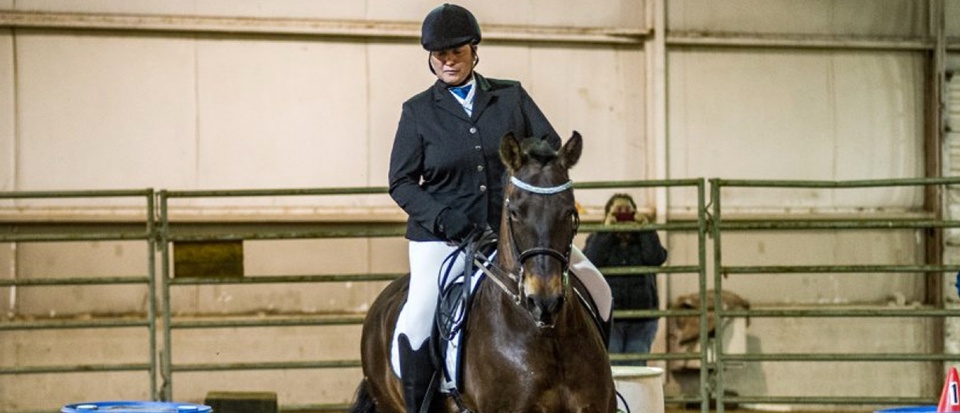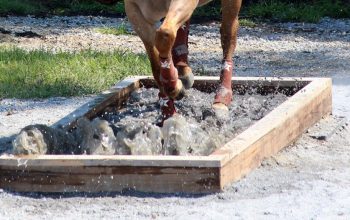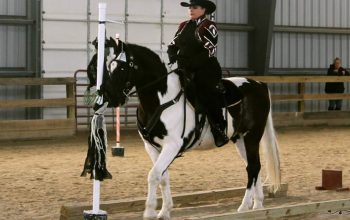
There are many factors that contribute to the growing popularity of the sport of Working Equitation. Yes, it is incredibly fun, with the Speed trial, in particular, drawing spectators. But part of the draw is also the fact that it offers a challenge for all riders, regardless of their level of expertise.
At its highest levels, the sport is technically challenging enough to entice highly-skilled riders from other disciplines. Many of the horses and riders currently at the top of the National rankings have come to Working Equitation already established in FEI-level Dressage or having reached the top of the metaphorical mountain in Extreme Trail challenges or having proven their courage as successful Three-Day Eventers.
These top-level riders and their mounts provide living examples of the skills the sport rewards: technically-correct athleticism, the ability to perform physically and mentally challenging maneuvers while maintaining proper relaxation and impulsion, and a harmonious partnership between horse and rider, even at speed.
Those introduced to the sport though YouTube videos of top European competitors such as Pedro Torres, Bruno Pica de Caniçeira, and Vasco Godinho (if you haven’t seen them before, it’s definitely worth a watch!) might despair of ever being able to master the sport. However, as the sport becomes more firmly established in North America, we’re seeing an ever-increasing number of competitors work their way up to the higher levels (Advanced and Masters).

Whereas a few years ago the only people competing in the sport at the highest levels in North America were already-established riders from Europe brought over to showcase what was expected internationally, we now have riders in several parts of the country successfully competing at the top, and even more ready to move up in the near future.
This doesn’t mean that one must be a Grand Prix dressage rider to enter the sport, though. The good news is that here in North America organizers have quite intentionally built an accessible ramp into the sport and continue to work hard to ensure that newcomers, both to Working Equitation and to riding more generally, have the support they need to find success.
The Introductory level is perfect for new or timid riders as well as for horses without much training. At this level, both the Dressage and Ease of Handling (obstacles with finesse) trials are ridden entirely at the walk and trot. Those who are not yet able to trot safely in a competition arena could (and often do) perform their entire tests at the walk, opting for lowered scores (for failing to ride at the specified gait) in the interest of maintaining safety and giving themselves— and their horses— a positive experience starting out.
As the levels increase, so do the expectations of horses and riders (see the table).


These stair-stepping expectations help keep both riders and horses engaged. Much as the obstacle work gives the horses something on which to focus, reinforcing the reason they are being asked to perform small circles with correct bend and balance, for instance, the sport as a whole gives riders specific targets on which to focus as they are improving their riding.
At each competition, competitors receive scorecards for both their Dressage and Ease of Handling rides, providing them with a tangible guide for areas to improve. Judges’ written comments help explain what needs to be done to improve a particular movement or obstacle. These scorecards also provide helpful guidance to riding instructors, as they can be used to identify specific exercises on which to focus lessons.
Watching horses and riders progress though the levels as they gain experience and skill is my greatest pleasures as an event organizer and clinician. In the six plus years I’ve been actively involved in the sport, I’ve seen so many horse/rider pairs start out barely being able to walk through a course and graduate over time to performing at a collected and balanced canter with grace, competence, and joy.

One of my goals in helping to bring the sport to North America was finding ways to help improve horsemanship and the enjoyment people get out of forming more solid partnerships with their horses. I’m thrilled to report that Working Equitation is… well, it’s working!
Story by Julie Alonzo
Cover photo: Julie Alonzo and her home-bred Andalusian mare CDC Memoria, currently compete at the Intermediate A level.
 Learn more about WE United: www.weunited.us
Learn more about WE United: www.weunited.us




